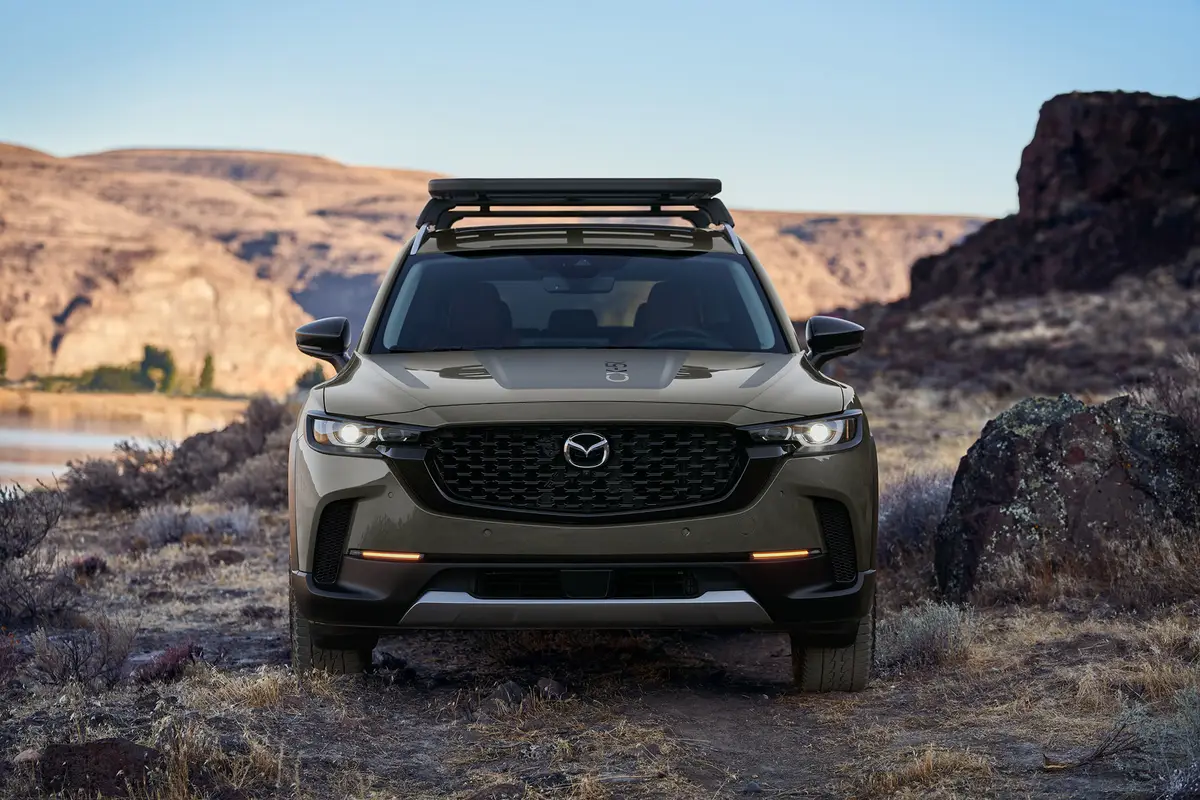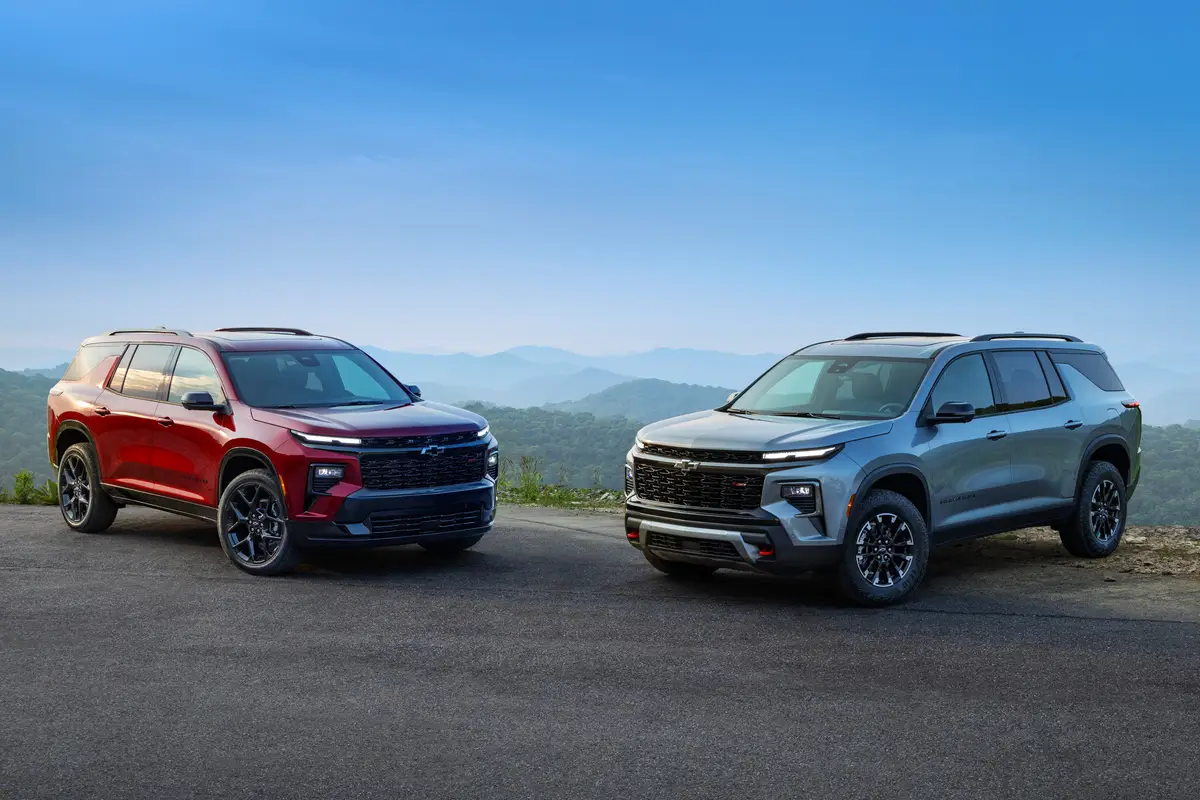Boston.com's view
Except for connecting their Blackberry phones, most Land Rover owners have no clue how their expensive SUVs work. They know their Rovers are special. Why else is there a dial thingy with snowflakes and cactuses right above the shifter, cool rocker switches with truck drawings, and an LCD screensaver of some sort (or is it a game?) with 3D graphics of gyrating tires? Whatever that stuff can do, it means other premium SUVs probably can’t.
Since the media frenzy over global warming, you might believe Americans have repented for their unhealthy fetish for big vehicles, especially for ones that can’t even crack 11 miles per gallon on our weeklong test drive. Yet, as buyers of thirsty, full-size SUVs have shifted to thirsty, full-size crossovers, Land Rover’s prestige factor – despite the company’s bottom-of-the-barrel J.D. Power rating – still carries enormous weight. In the case of the 2010 LR4 we drove, that prestige is a crushing 5,617 pounds.
Moving that weight with much greater ferocity than the outgoing, nearly identical LR3 is a new aluminum 5.0-liter V-8 engine churning out 375 horsepower, 10 shy of the same engine in the Jaguar XK. The engine doesn’t have to work as hard through the smooth 6-speed automatic as the old 4.4 liter unit did. Its quicker response matches the more accurate steering and recalibrated air suspension, which keeps the body level with surprisingly little pitch and brake dive.
But you’re not left thinking this is a lithe vehicle. You’re a bus driver. Climb up to the driver’s perch, complete with adjustable arm rest, and the LR4’s square frame, tall windshield, upright dashboard, and flat, protruding hood impart the same invincibility that MBTA drivers brandish. Hop out and sometimes, depending on the incline, the LR4 will hiss as it levels each of its springs. You can also flip a switch to lower the truck two inches. Flip it two notches the other way and you’ll be up another 4 inches. Or use the key fob and watch this mechanical dance outside. You’ll never again be bored waiting for someone.
But the best childish fun you can have with the LR4 is on the worst terrain, where no owner of a $55,000 car is likely to tread. It helps to start out with an expert guide and an actual understanding of all those nifty 4×4 graphics and buttons. That’s why the sprawling Equinox Resort in Manchester, Vt., has its very own Land Rover school, designed for off-road newbies like myself, only much richer.
It took a few weeks to book a reservation at the Equinox, and until then, I had to resist jumping the LR4 over city curbs and crawling over the C-line tracks by my apartment. Finally, 3½ hours northwest of Boston, I’m sloshing up a muddy side road that three minutes later becomes a snow-covered trail. A warning sign says the town isn’t responsible for clearing or maintaining the road, even though they’ve labeled it a “public highway.” It’s Vermont’s way of keeping us “flatlanders” with good-for-nothing BMW X5s out of their playgrounds.
I’m in a 2009 LR3 – and drove the Equinox’s private course earlier in an LR3 – because today it’s the only Land Rover with a winch, in case I do something stupid.
Which to my amazement, I don’t. My instructor Rick cinches chains onto all four tires before we crash through the unplowed, 2-foot-high crust ahead, marked with the recent tread of a few unsuccessful drivers. I charge with two hands firmly on the wheel, the front tires bite the mush, and I apply a slight correction to keep the back going straight. Boom. Done.
The chains stay off most of the day, and because I’ve progressed to amateur level, Rick lets me try the non-winched LR4. Oddly enough, I’m told to keep the big knob out of the snowflake position and into “mud and ruts” mode. Each setting varies throttle response, gear shifts, suspension, and traction control sensitivity to the desired surface. This is point-and-click four-wheel-drive at its finest.
The LCD display shows each tire compressing and rebounding and notes when the center and rear differentials lock up to provide greater traction. It’s more fun for the front passenger than useful for the driver, since I’m too busy to look at it. That’s because I’m sliding sideways and backward down an icy hill. “When in doubt, throttle it out,” Rick says, and on the second attempt I power up with no trouble.
It’s the same going down. Lots of SUVs have a feature called Hill Descent Control (HDC), which pulses the brakes to maintain a steady speed on steep grades. Proper off-road technique on a downhill dictates first gear and low range, and I find the LR3 and LR4 creep more controllably without HDC, which tends to cause herky-jerky movements.
For a mere fraction of the cost, serious off-road drivers do all this in old, jacked-up Jeep CJs without any electronic aids. Yet afterward they’re cold, bruised, aching, and can’t hear anything on the highway ride back home. In the LR4, the stress and noise of terrible roads never come inside. You just keep tearing away at the heated steering wheel and enjoy the soft-touch center stack that does away with the LR3’s confusing plastic trap of cheap-looking controls.
So what if LR4 owners never drive the way I did? They’ll like the three sunroofs, three-zone climate control, and two rows of flat-folding back seats. They’ll like how the LR4 is cheaper and bigger than the Range Rover Sport, which is more popular because it says “Range Rover” on the hood. Yet the little Range Rover, just like the LR4, is festooned with Land Rover badges, so go figure.
Long-term reliability, as evidenced by an electrical gremlin that kept forcing a back window down when we wanted it up, is still an unsettling question for Land Rover. We had the exact same problem in a 2010 Jaguar XF, one of its corporate cousins.
Unless the four-wheel-drive fails on the way to Starbucks, I’m betting the LR4 won’t have trouble making friends.
Latest news



